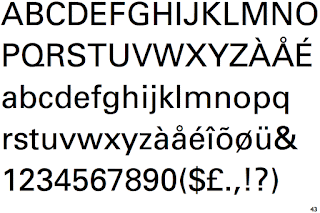Initial Ideas
My initial ideas are all based on my adjective delicate - to start designing I looked at the synonyms of delicate. This helped me to try and translate the adjective into my designs for the typeface.
Rationale 1 idea -
Looking at putting characteristics from Baskerville onto Helvetica. Characteristics like the high contrast in thick and thin strokes, graceful bracketed serifs with flat bases. It would be interesting to add character and more fun to it going against its original characteristics and have more personality. I could translate the personality of the word by making the weight thinner overall.
Rationale 2 idea -
Creating gaps in the lettering resembles something which is close to breaking showing me that it is fragile, dainty and delicate. Looking at Baskerville, keeping the serifs yet making them flat based to add character, using lowercase to make it look more feminine whilst adding higher contrast in weights.
Concept Crit -
The pictures above are what we started with in the concept crit. On the left the tutors first told us to make small images of what we thought our adjectives looked like. I decided that flowers represented the word delicate very well. The dainty leaves with light strokes showed the delicacy well. We then went around our table and gave our sheet to the person next to us to see what they thought our adjective could be represented by, thus helped me a lot because it gave me a sense of what my peers thought as well as me. Then the last image on the right we then had to add a sentence to our drawings to give it a small explanation. This gave me a couple of different views which was useful.
The concept crit really helped me because it opened my eyes up by just thinking about the possible ideas and different routes I could go down. However the thing that helped me the most was the feedback I got from my peers -
From reading the feedback, I thought I would carry idea 1 forward by experimenting with Helvetica by adding characteristics from Baskerville and having a higher contrast in weight to give it more character. However I still really like my idea of breaking up the lettering to make it more fragile.
Rationale 1 idea -
Looking at putting characteristics from Baskerville onto Helvetica. Characteristics like the high contrast in thick and thin strokes, graceful bracketed serifs with flat bases. It would be interesting to add character and more fun to it going against its original characteristics and have more personality. I could translate the personality of the word by making the weight thinner overall.
Rationale 2 idea -
Concept Crit -
The pictures above are what we started with in the concept crit. On the left the tutors first told us to make small images of what we thought our adjectives looked like. I decided that flowers represented the word delicate very well. The dainty leaves with light strokes showed the delicacy well. We then went around our table and gave our sheet to the person next to us to see what they thought our adjective could be represented by, thus helped me a lot because it gave me a sense of what my peers thought as well as me. Then the last image on the right we then had to add a sentence to our drawings to give it a small explanation. This gave me a couple of different views which was useful.
The concept crit really helped me because it opened my eyes up by just thinking about the possible ideas and different routes I could go down. However the thing that helped me the most was the feedback I got from my peers -
From reading the feedback, I thought I would carry idea 1 forward by experimenting with Helvetica by adding characteristics from Baskerville and having a higher contrast in weight to give it more character. However I still really like my idea of breaking up the lettering to make it more fragile.











































